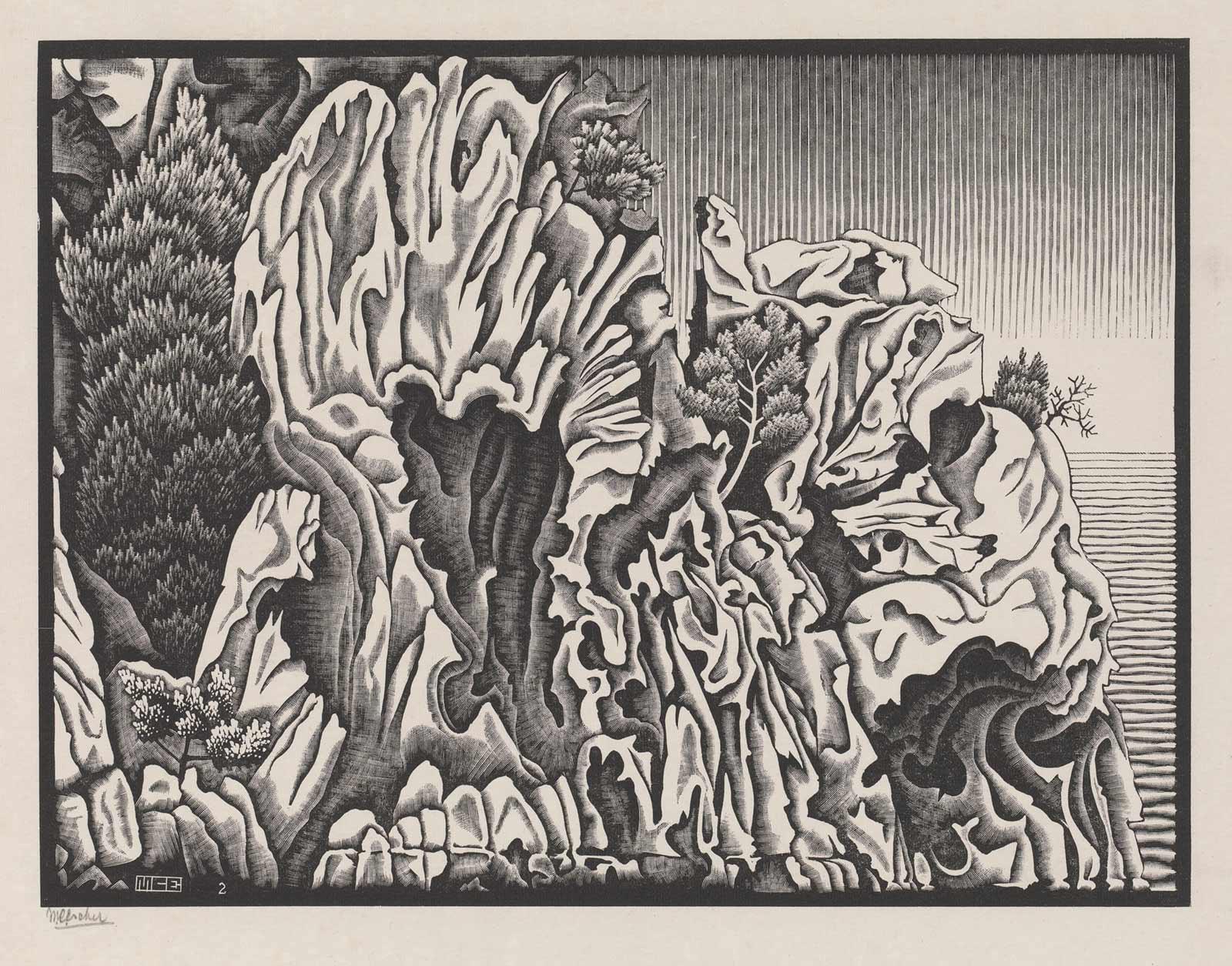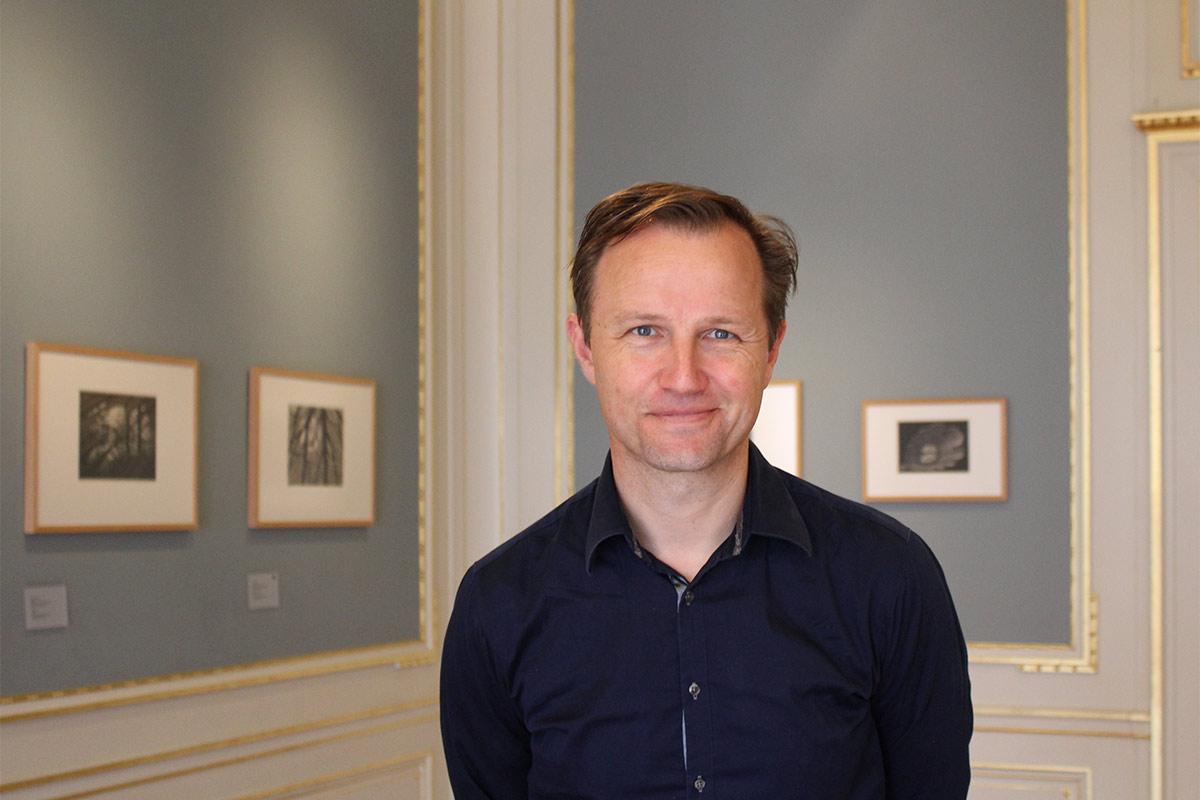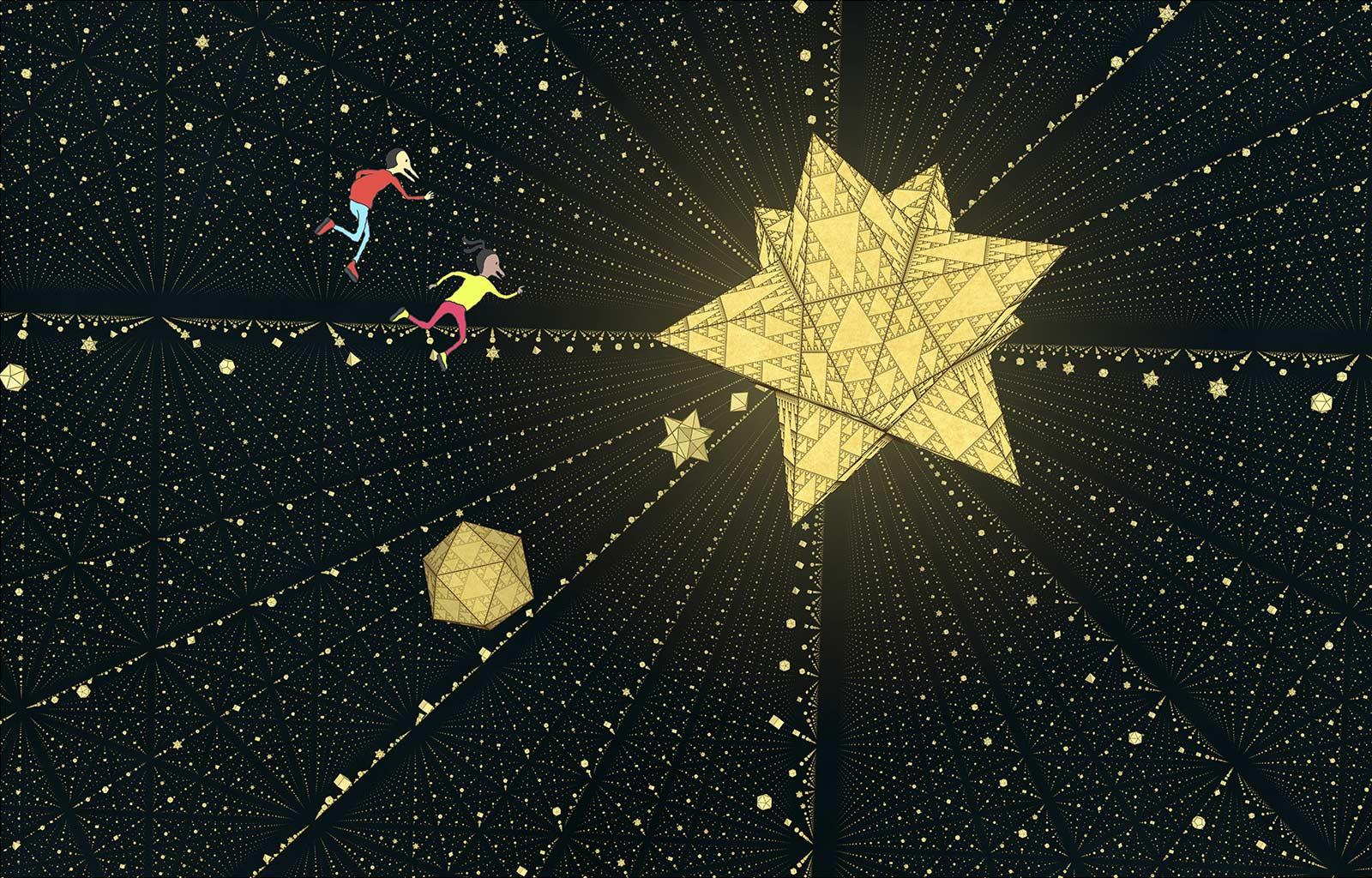

In June 1932, Escher was commissioned by the Dutch Historical Institute in Rome. The institute wanted to devote attention to a church whose visibility was threatened by the emerging new building sites in the capital. In the lithograph that Escher produced of San Michele dei Frisoni (the Frisian Church), he allows himself a considerable degree of artistic licence. He does not depict the current version of the church (built in 1141). Instead he portrayed the original version, which was destroyed by the Normans in 1084 during the Investiture Controversy. This controversy is known as the conflict between the Holy Roman Emperor Henry IV and the then pope Gregory VII.
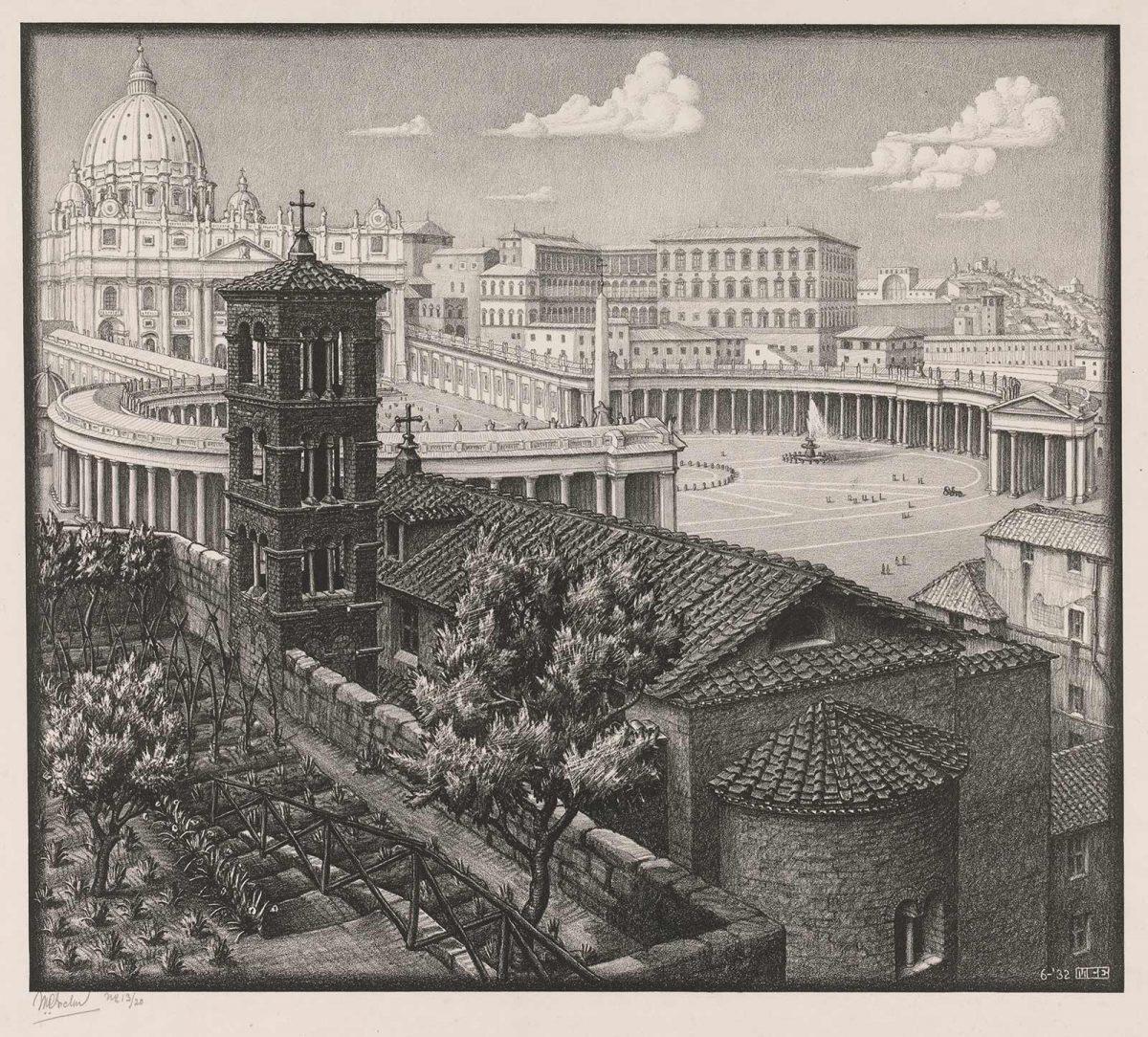
Creating his own vision
At that time, St. Peter’s Square, Bernini’s colonnades, the Apostolic Palace, St. Peter’s itself, and the other Vatican buildings in the background did not exist. Incidentally, this correction of reality was in line with the way in which Escher almost always worked during this period. He would produce a drawing or take a photograph of a landscape and mould that landscape as he saw fit in the print he produced of it. The intervention in San Michele dei Frisoni is both radical and modest—the church he depicts in the print may not exist, but the rest is a faithful rendering. A striking feature of the print is the contrast between the bold main subject and the much lighter buildings behind. Escher really puts the old Frisian church on a pedestal.
Traditionally, the Frisians were residents of the entire coastal area of the Netherlands, North Flanders and the coastal area of Germany from the North Sea to Denmark. All residents from these areas were given a place in Rome where they could go on their pilgrimage to the Holy City. That became the Frisian Church. The current version of the Frisian Church is over 800 years old. The church building (also known under the Italian name Santi Michele e Magno) was built in 1141 against one of the Roman hills, the Janiculus, which borders St. Peter’s Square. Building a church with surrounding houses for a specific group was very common at the time. Catholic Lombards also had their own district in Rome, as did the Saxons and the Franks. In the course of the centuries all their churches were lost, while the Frisian church is still there. When all buildings at the bottom of the hill were demolished for the construction of St. Peter’s in the 16th century, the Frisian Church was spared thanks to its location (just up the hill). Nowadays, a celebration of the Eucharist in Dutch is performed every Sunday, while the Dutch tricolour and the Frisian flag can be seen next to the organ.
Map is loading...
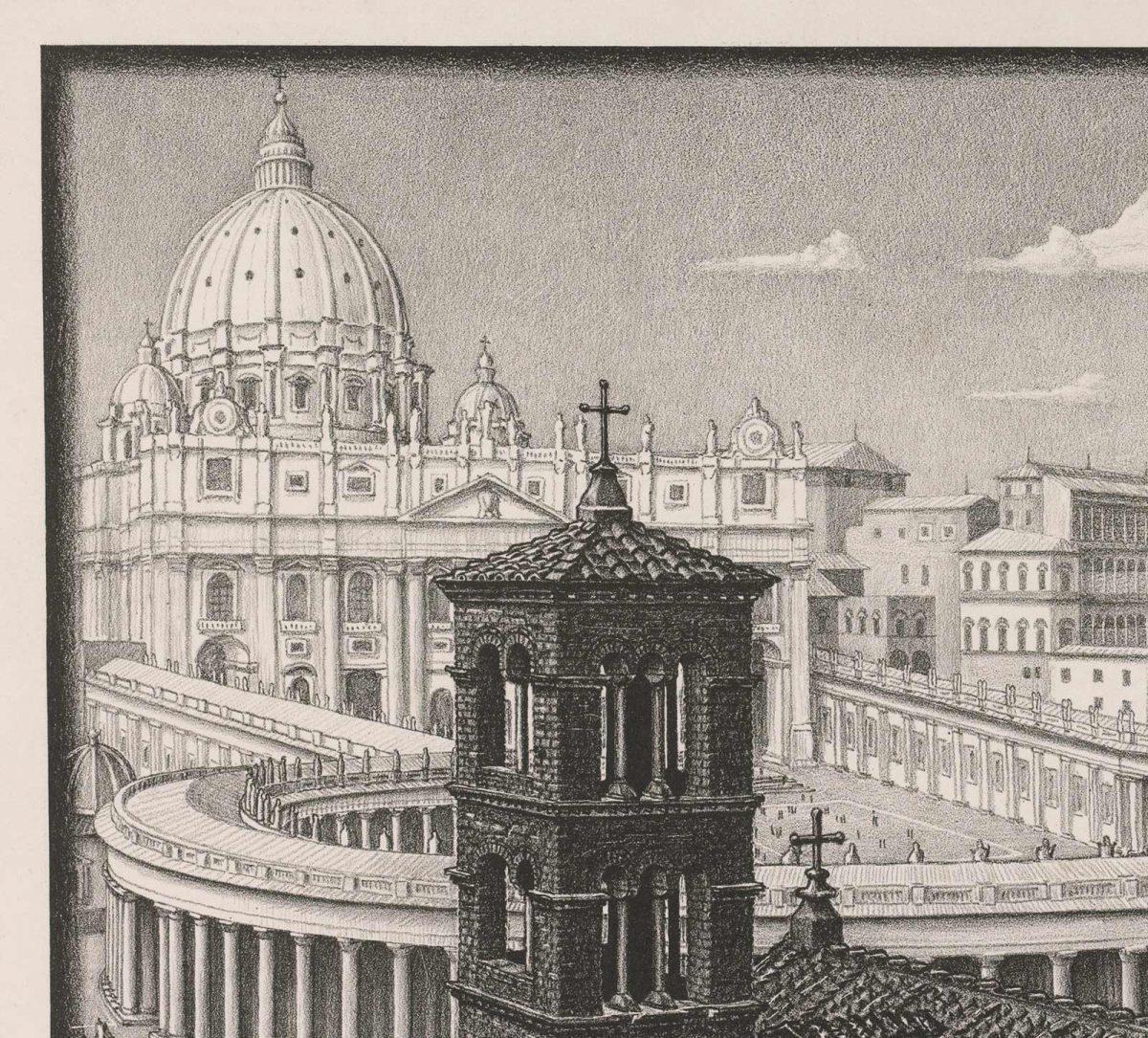
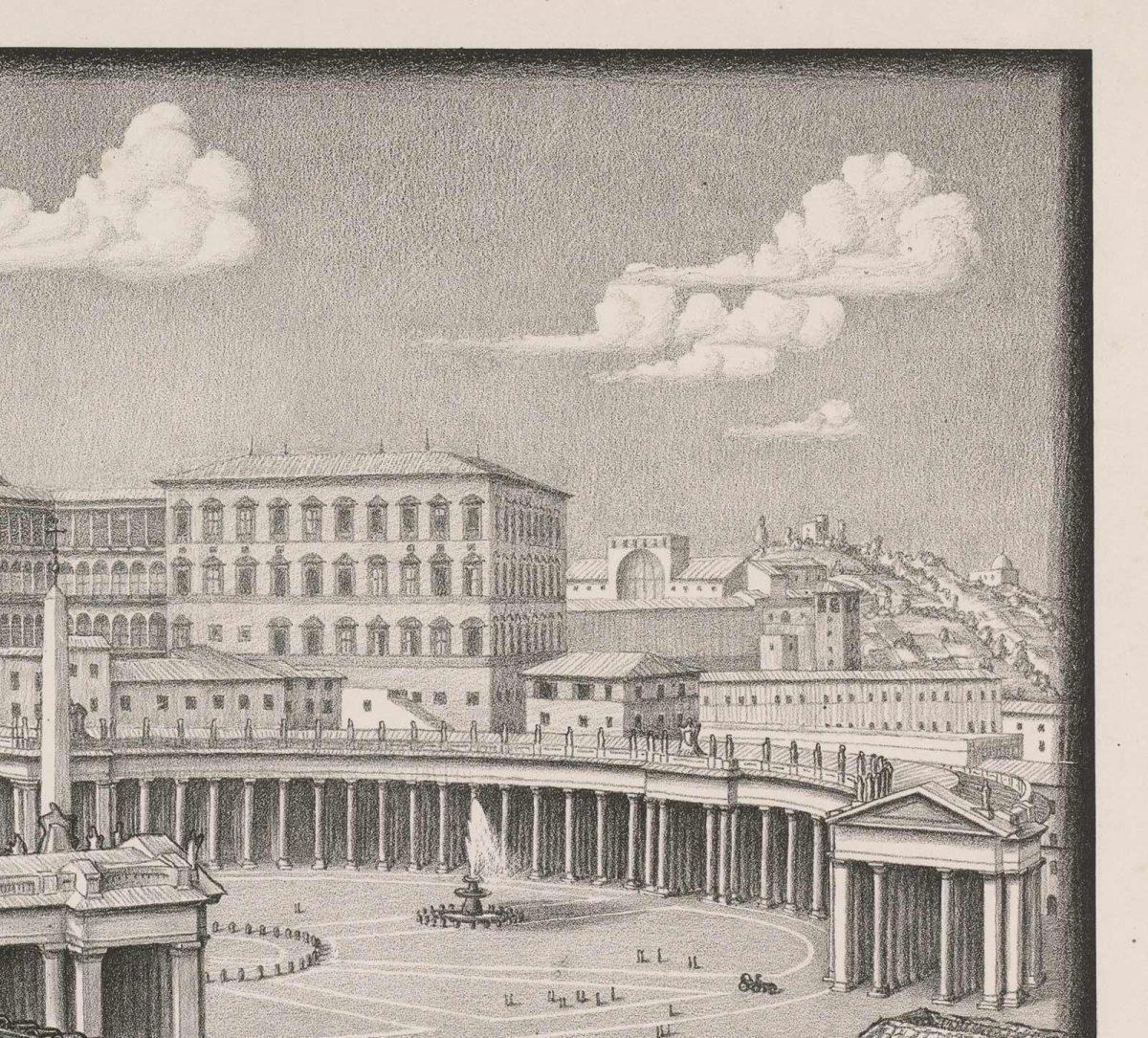
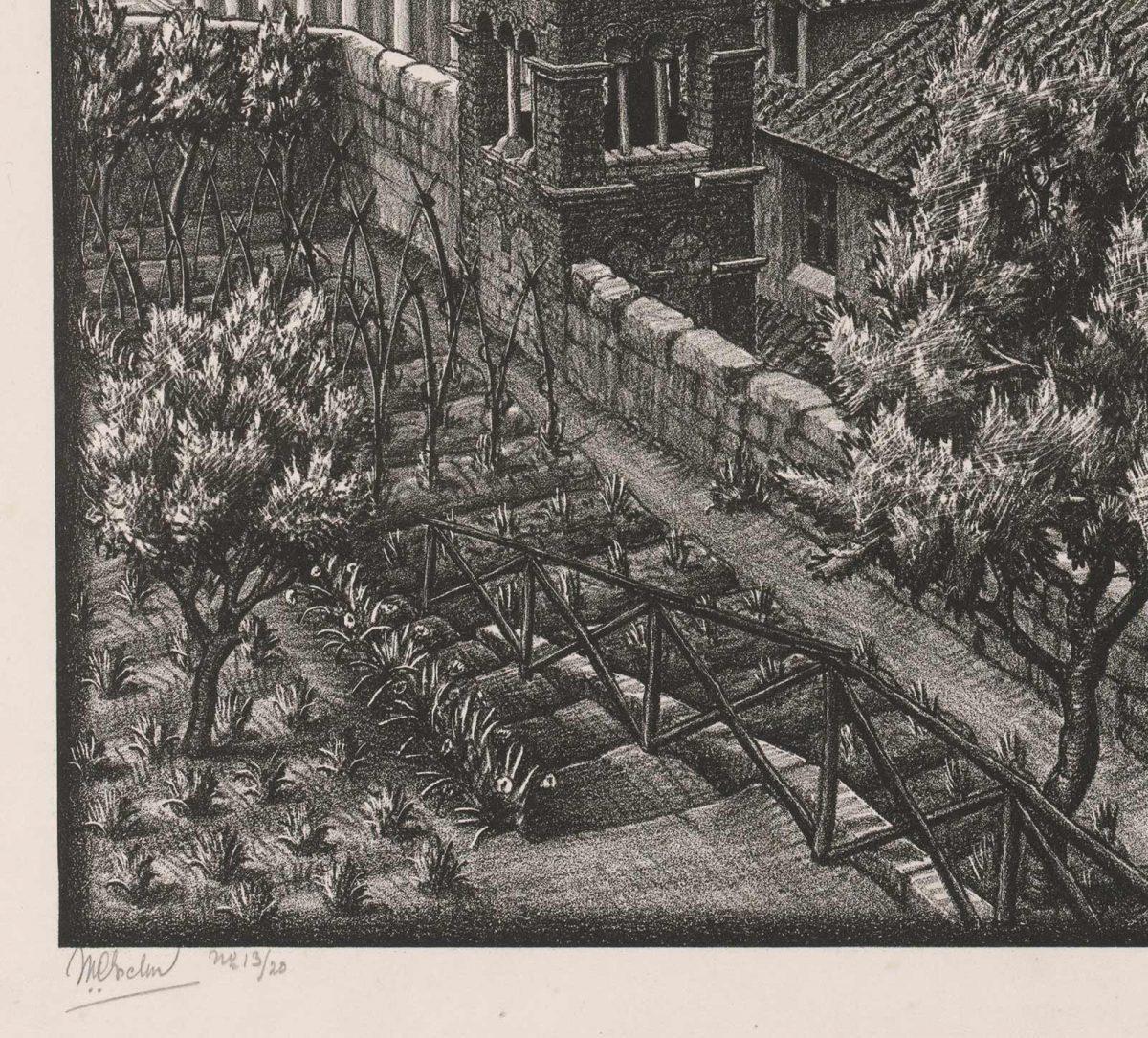
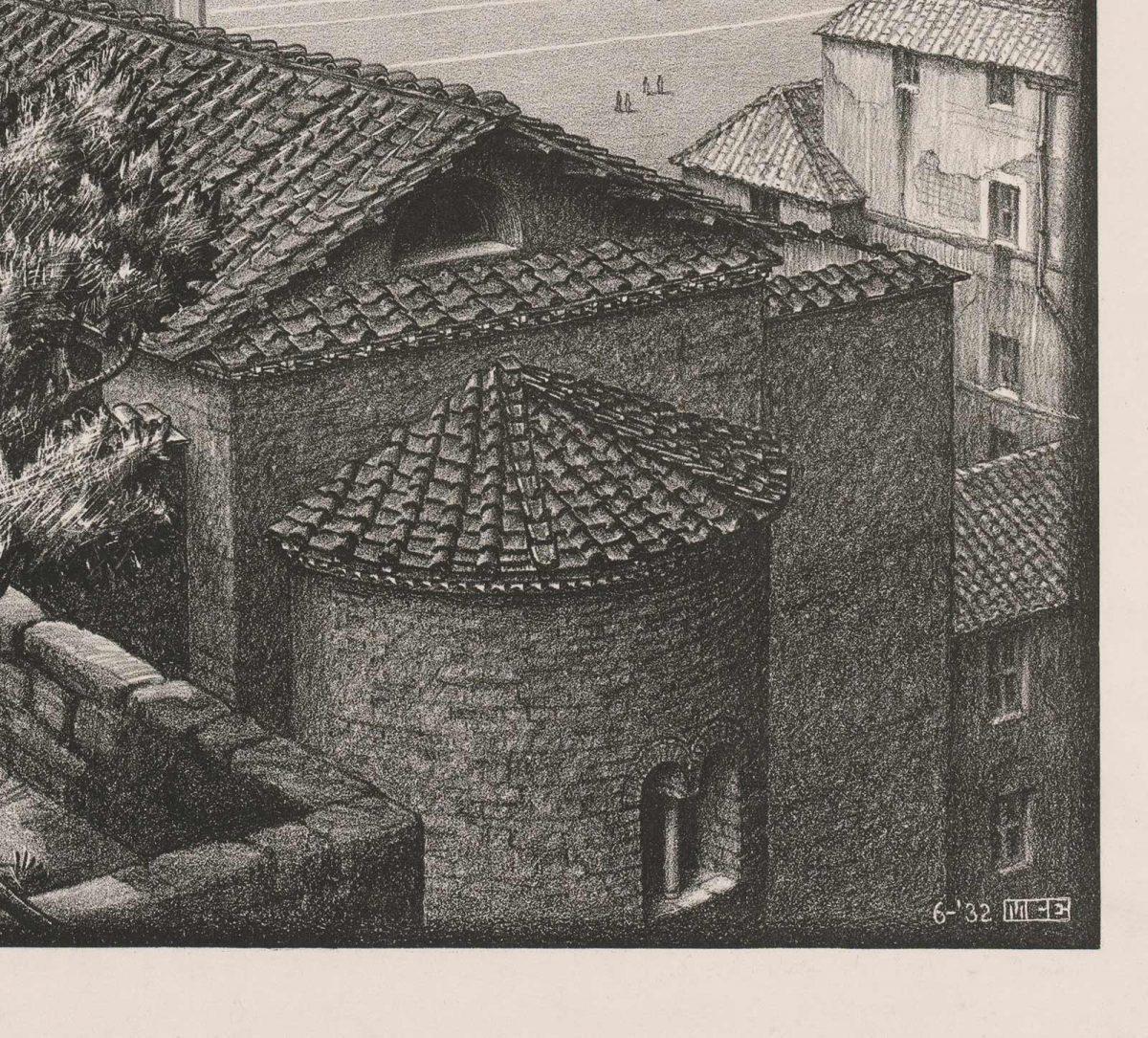
More Escher today

